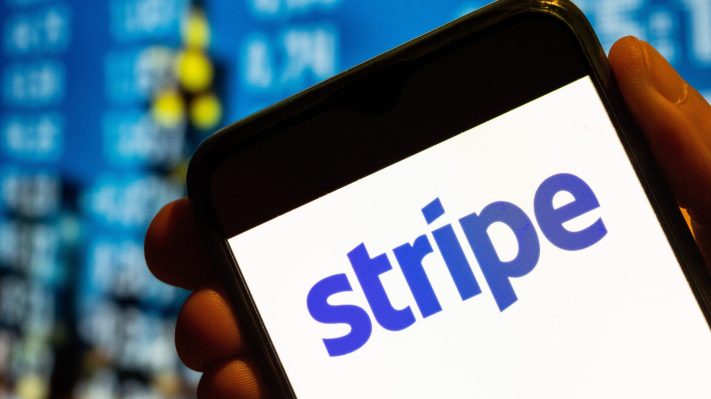Growth at $50 billion fintech Stripe has been slowing this year, but one of its key strategies to reverse that course got a decent push today: Stripe is announcing that it has inked a “strategic payments partnership” with Uber. The pair will work together initially on selected services in eight of Uber’s biggest markets, including the U.S., the U.K., Canada, Mexico, Australia and Japan.
Some context on this deal: Uber’s big U.S. rival Lyft has been a longtime marquee customer of Stripe’s for payments, and whether or not it was true, that was one reason some assumed Uber and Stripe would not work together. Uber is, however, a much bigger beast, at close to $100 billion transacted annually (Stripe processed $817 billion last year). And Uber is not just a force globally but in the U.S. specifically, where one estimate from YipIt (via WSJ) puts Uber’s rideshare market share currently at a whopping 74%.
Lyft will remain a customer of Stripe’s, Stripe president Will Gaybrick confirmed to TechCrunch.
Financial terms of the deal are not being disclosed, but as with the rest of Stripe’s payments business, a big component will come from commissions that Stripe will make from each transaction that it powers on Uber’s platform.
The Uber partnership, expected to be announced formally later today at Stripe’s user conference, comes on the heels of recent enterprise deals Stripe has inked with Amazon, Microsoft and BMW.
Stripe started as a simple API to integrate card payments into sites and apps (the “stripe” of its name a reference to the magnetic strip on the back of those cards), but over the years, as it’s looked for bigger margins and more diversification, it’s added dozens of other products and features, including services to help calculate and account for sales tax, help triage fraud attempts, incorporate businesses and more.
But this partnership — for now at least — is not a global adoption of all that Stripe has to offer. Uber will be using Stripe to break into a specific, new payments frontier. Specifically, it will integrate Stripe Financial Connections and Link to let users import banking details to pay for services like Uber Rides and Eats directly from bank accounts, giving users a payments alternative to credit or debit cards.
“Creating payments experiences that combine payments innovation, reduced friction, and cost savings is at the core of what we do. Using Link to give customers the option to easily pay with their bank accounts puts us in a position to tick all those boxes while providing access to an increasingly popular mode of payment,” said Karl Hébert, vice president of payments, risk, and identity at Uber, in a statement. “Stripe shares our commitment to reliability, customer centricity, and continued innovation—which is why they are a key partner.”
Stripe’s flagship product powering card payments, meanwhile, is being rolled out for the first time in two of those markets: Australia (via eftpos) and Japan (via JCB). The full list now includes Canada, the UK, France, Malta, Mexico, Brazil, and the U.S. (In that wider list, Uber is one of a group of providers, so it’s unclear how much business that generates.)
In other words, although Stripe has built out some interesting products — including marketplace services like instant payout service it developed early with Lyft to pay drivers more quickly — these will not be a part of the mix for now.
All the same, it’s a significant step for Stripe. The company had been working on an Uber deal for years, with trials over the last three. This opens the door to the two working together more.
Gaybrick said part of not working together more significantly previously was a matter of a scaling issue: Stripe has more large customers now, but its start was really with other fast-growing (but smaller) startups. “Stripe was not around when Uber was founded,” Gaybrick explained. “When we first started speaking several years ago they were excited for the ease of use and reliability, but we had a ways to go to convince them that we were powerful enough and performant on the market. Now that is how they see us.”
For Uber, the deal is notable in that it underscores some shifts at the company.
Earlier this year, Uber announced a seven-year cloud services deal with Oracle and Google to host its IT infrastructure, and shortly after that it launched a redesigned, simplified app that focuses on more personalized experiences for users.
Taken together, the two signal how Uber — under the same cost and economic constraints as the rest of the market — is looking for better ways of targeting engineering resources on product and away from some of the functions that might be handed off to third parties to manage.
Uber has been known for building and managing a lot of its payments infrastructure itself, and while it will continue with that, it’s also using a multi-vendor strategy to manage some of the work at the first and last mile of that process. That’s the opportunity for Stripe and others like it.
It remains to be seen how far that opportunity extends. Notably, Uber’s efforts in “super app” territory have most recently been about expanding transport options. Even Uber Eats is a separate app. That is in contrast to some of its regional counterparts like Grab and GoJek, which offer not just mobility, but deliveries, online shopping, entertainment, financial services and more.
Will Uber ever want to do more? Could it? If Uber’s hopeful answer to either of those is “yes,” then you could see why it might want to bring in more payments specialists as partners to build and scale that.
